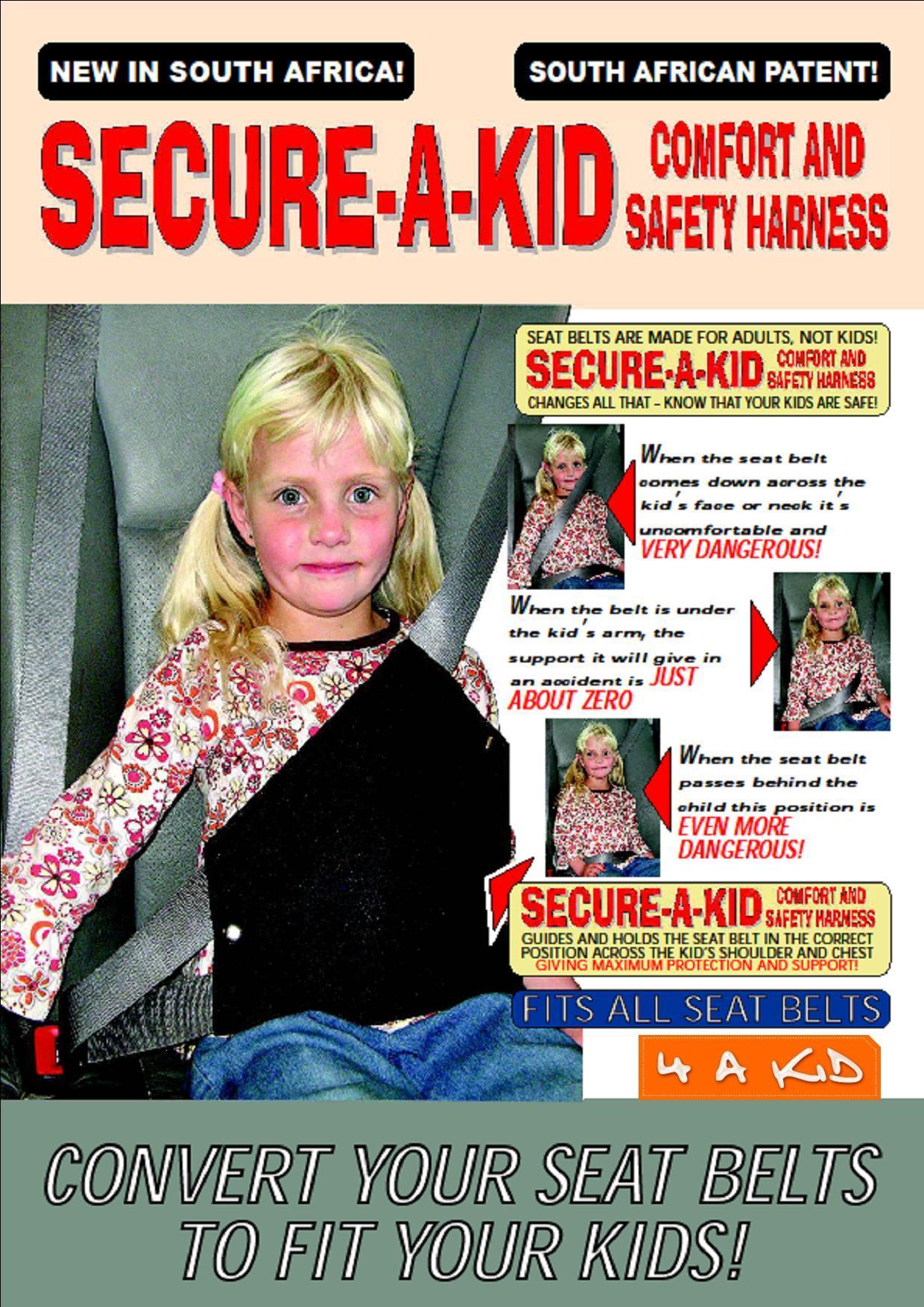Why Children Should Not Use Adult Seat Belts
When it comes to safety on the road, there is no room for compromise. Road accidents can happen to anyone, and the consequences can be dire, especially for children. As such, it is essential that parents take measures to ensure the safety of their children while on the road. One such measure is the use of seat belts. However, it is not enough to strap children in using adult seat belts, as these restraints are designed for adults, not children.
The Law in South Africa
In South Africa, the law requires that every motor vehicle is fitted with SABS approved seat belts/restraints. It is also a legal requirement that every passenger in a motor vehicle, regardless of age, must make use of the seat belts/restraints and strap themselves in. It is the responsibility of the driver to ensure that all passengers are strapped in.
SABS Approved Seat Belt/Restraint System
The current SABS approved seat belt/restraint system uses the three-point system, consisting of a horizontal (lap) belt and a diagonal (shoulder) belt. The lap belt is designed to pass across the lap from hip to hip, holding the passenger in place and preventing the lower body from propelling forward in the event of a sudden stop or accident. It is vital that the lap belt passes across the lap and does not rise up to the stomach or abdomen area or across the legs, especially with children who have an underdeveloped pelvis.
The diagonal belt is designed to pass across the center of the shoulder and across the chest, holding the passenger in place and preventing the upper body from propelling forward in the event of a sudden stop or accident. It is vital that the diagonal belt does not drop off the shoulder and does not pass across the abdomen or even touch the neck.
Adult Restraints Unsuitable for Children
All seat belts fitted in cars in SA are designed, manufactured, and designated as “Adult Restraints” and are therefore totally unsuitable and inappropriate for children under 12 years of age or under 1.5 meters tall. This is a fact that some of the leading car makers, such as Mercedes, Kia, and Toyota, acknowledge in their user manuals.
Mercedes states that children less than 150 cm in height and younger than 12 years require suitable restraint systems for their protection in the event of an accident as the seat belts cannot be fitted correctly. Kia advises that as children grow, they may need to use new child-restraint systems, including larger child seats or booster seats, which are appropriate for their increased size. Toyota cautions that the shoulder belt should always be positioned across the center of the child’s shoulder and kept away from the child’s neck, but not falling off the child’s shoulder.
Compulsory Use of Safety Seats for Small Children/Babies
Because the normal SABS approved seat belt/restraint system is not suitable or appropriate for children, it is a legal requirement in South Africa that if you transport a small child/baby (under the age of about three or under about 21Kg’s), the child/baby must be secured in a SABS approved Safety Seat. A SABS approved baby seat has its own built-in restraints designed to suit the child and is only effective if integrated into the fitted seat belt system. Once the child/baby outgrows the Baby Seat, it then becomes compulsory that the child is strapped in using the standard fitted seat belts.
The Problem with Fitted Seat Belts
The problem is that the fitted seat belts in all cars in SA are simply too big for a child under 12 years of age or under 150cm in height and, therefore, totally unsuitable and inappropriate for them. When the child is strapped in, the seat belt for the child to sit on.
Booster seats are designed to elevate the child's seating position and position the seat belt in the correct manner to ensure the child is properly restrained. Booster seats are recommended for children between the ages of 4 and 12 years old, or weighing between 15 and 36 kilograms.
In addition to booster seats, there are also specialized child car seats available that are designed to accommodate the needs of infants and toddlers. These seats provide additional support for the head and neck, and are designed to keep the child secure in the event of a collision.
It's important to note that not all child car seats are created equal. When selecting a car seat, it's important to choose one that is appropriate for your child's age, weight, and height. In addition, the car seat should be installed correctly and securely to ensure maximum safety.
On a final note
In conclusion, while seat belts are an essential safety feature in any vehicle, it's important to remember that they are designed for adult passengers. Children require specialized car seats and booster seats to ensure they are properly restrained in the event of a collision. By following the guidelines set out by car manufacturers and safety experts, we can help ensure the safety of our youngest passengers on the road.
View the Secure a Kid online here: https://www.4akid.co.za/product-category/brands/brands-secure-a-kid/










